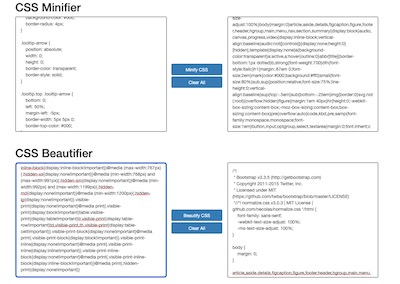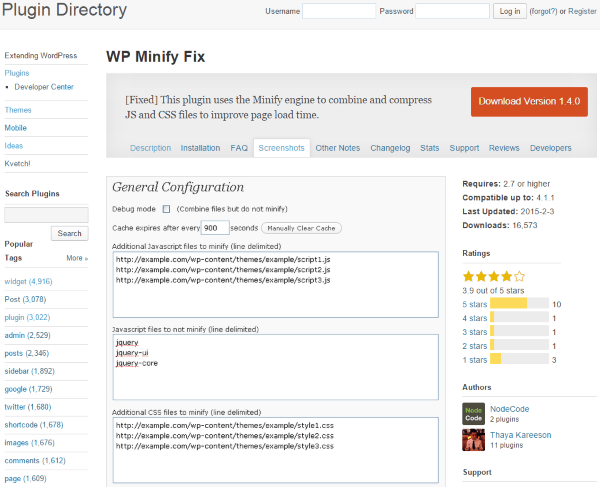
scss files that we will create from scratch.
#Css minifier prepros code
However, the new organizational system (scss folder with partials) and new workflow (using a local dev environment) will provide a faster, more efficient way to write code, a cleaner, more maintainable code base that is re-usable, and a more powerful, flexible way to export and deploy project styles. The end product, a “compiled” style.css file, should be no different than it was in the beginning. In this hands-on activity (initially done as an in-class exercise in 2017), we will work backwards: using a stylesheet for a small brochure site, we will convert a single-file CSS system into an organized multi-file SASS system. The new “Sassy CSS” system (a scss folder with partials) and new workflow (using a local dev environment with a pre-processor) will provide a faster, more efficient way to write cleaner, more maintainable code that is re-usable and a more powerful, flexible way to export and deploy project styles. The end product, a single “compiled” style.css file, will be minified and ready for production. In this hands-on activity (initially done as an in-class exercise in 2018), we will code a simple, single page brochure site from scratch using a multi-file SASS development system (that ebraces SASS features such as variables, partials, and nesting) to auto-generate a single-file CSS site that is ready for production. Hands-on Activity #2: Convert a Static Site to a Sassy Site The new SCSS files will embrace SASS features to improve the coding experience, such as variables and nesting.Īll instructions are embedded into the content of the “Sassy Base” site that you will be building (see the instuctions on the home page). Embrace Components by working on small, bite-sized pieces of code that will work together to form a larger, modular system consisting of multiple SASS partial files.Establish a custom organizational file system using SASS partials that embrace best practices and strategies from popular CSS methodologies (e.g.In this step, we will use a Prepros, a GUI-based front-end compiler.


#Css minifier prepros manual
Auto-reload a browser whenever a file is saved without a manual refresh.

Spin up a local webserver from a dev environment (as opposed to using an IDE).Hands-on Activity #1: Sassy Sitebase From Scratch Outcomes: There are several ways to learn SASS and multiple different approaches to setting up your projects and your CSS architecture, so below are a few different ways to go about it.

One solution is to separate your styles into smaller parts (partials) and then use a preprocessor (SASS) to compile the styles into one style.css. This may not be a big concern for small static brochure sites, but as you work on larger, more complex projects with multiple designers/developers, style organization becomes essential. How you choose to organize your styles can affect your efficiency as a front-end developer (how long it takes you to write code? how much code do you re-use from project to project? ), your ability to manage complex projects and work with others (how readable is your code? how easily can others understand it?), and how fast your site loads (how how much of that code is actually needed? do you always make time to refactor and optimize your code?). Organizing Styles: Using SASS Partials for a Modular CSS Setup


 0 kommentar(er)
0 kommentar(er)
